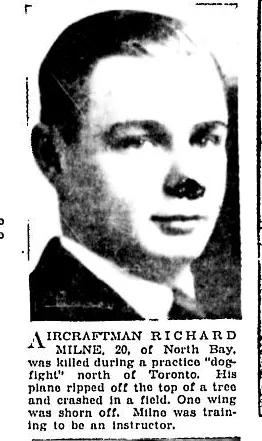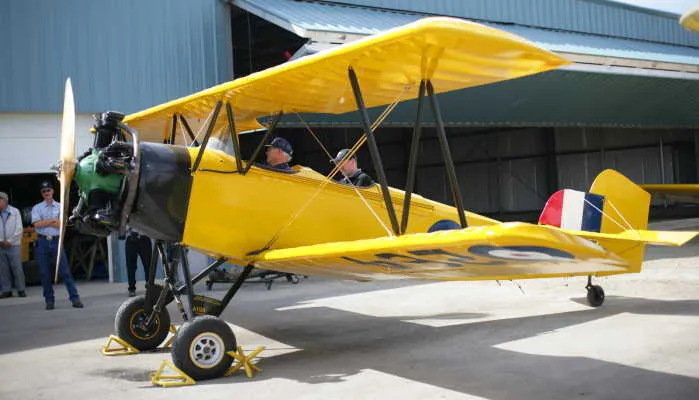1 Training Command. Toronto, Ontario. Fleet Fawn II aircraft with civil registration CF-CGO (RCAF serial 230) crashed in North York Township, Ontario, while on a dog fighting training exercise
LAC RB (Dick) Milne (RCAF) was killed in the crashThe aircraft was owned and operated by Patterson and Hill Aircraft training pilots under a BCATP contract


